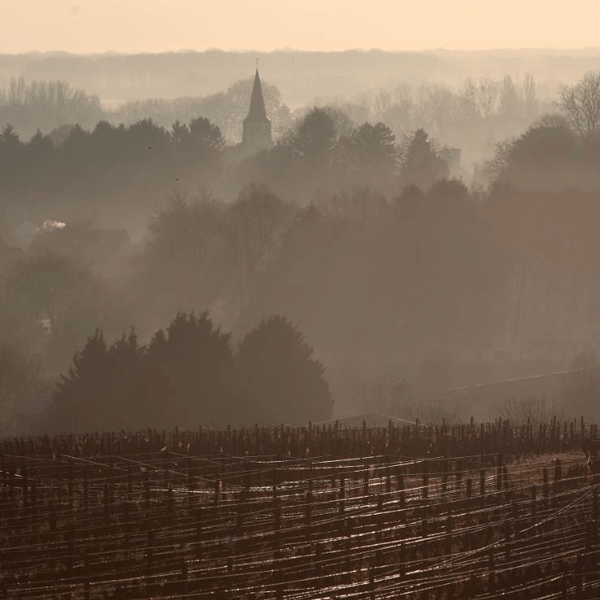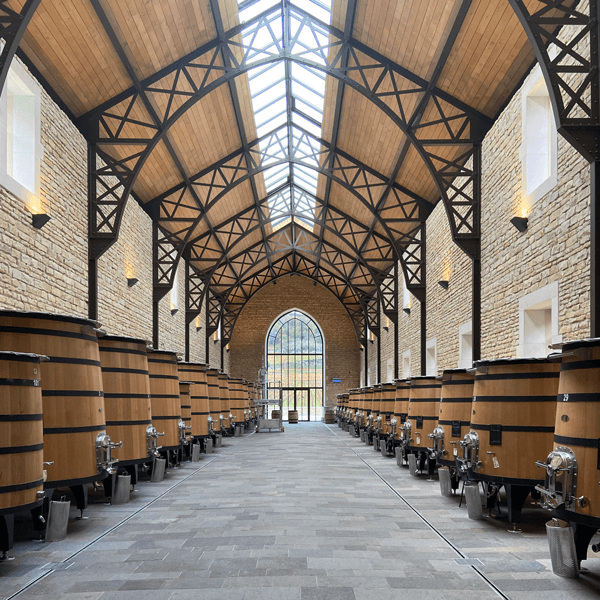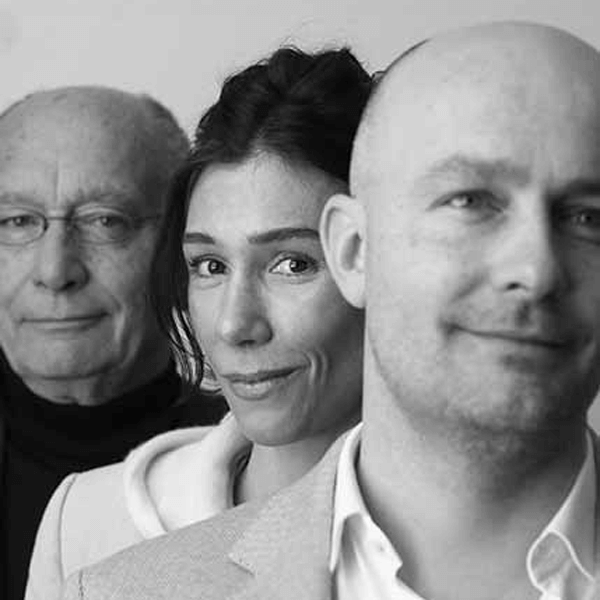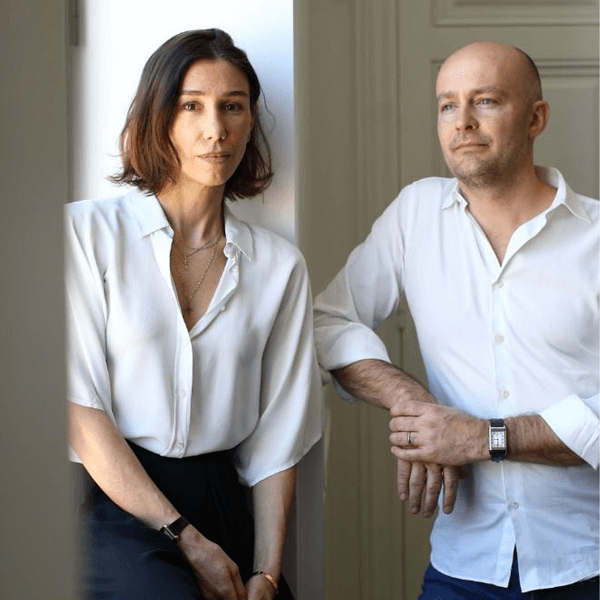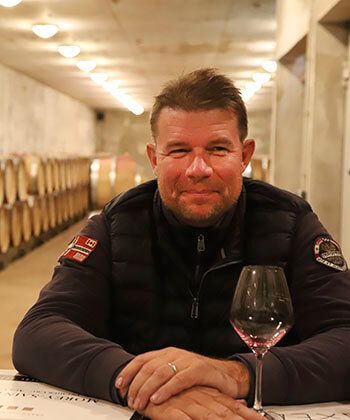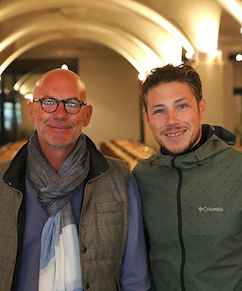Côte de Beaune
As with last year the reds from the top plots from Pommard and Volnay were arrestingly good. I don’t believe this was the case across the entire region, but De Courcel, Comte Armand and Nicolas Rossignol, to name a few, were so skilful in their navigation of the conditions 2023 threw at them, that they have made some of their finest wines to date.
The latter, in particular, treated us to an absolute masterclass in pre-conception shattering wine making. Nico is using more new oak (although his secret is zero toast, instead favouring steam to bend the staves) and picking later than anyone, yet his Volnay and Pommard have enormous lift, freshness and structure to work in harmony with the glorious fruit he is able to impart.
This talent doesn’t come cheap, but when you size them up next to the great wines of the Côte de Nuits, they are runaway bargains.
Please note that some of the web pages may take a few moments to load.

Domaine Remy & Fils
A family domaine that extends back five generations to 1853, but which Joël has modernised considerably over the past twenty years, installing new fermentation and ageing equipment. Over the years his vinifications have changed, and the wines have a lot more immediacy and precision. The quality of fruit is not in doubt, as lovers of his Bourgogne Rouge from year to year will attest, and a lot of work in the vineyard contributes to this, including leaf-thinning towards the end of the growing season. In the winery he has installed a vibrating sorting table, and the only filtering is by a lens filter at very low pressure to avoid de-naturing the wines. All offer quite striking value.
In 2016 Joël was joined full-time by both his children, Maxime and Manon. There is a renewed air of excitement and ambition here. They are moving to slightly longer élevages over eighteen months, with four to five months in cuve at the end.
Joel hunts finesse and has been working on tannin structure for years. Picking at right time, using his vertical press - 'artisanal perhaps' says Joel but you can control it so closely - very gentle extraction is possible. Less Pigeage too. It's clear these efforts are all paying off!
2023 BOURGOGNE ROUGE Pinot Noir Domaine Remy & Fils
Round and supple - easy to love right away. Good dark cassis character but ripe too - and really sexy. Long - a touch of soaked raisin perhaps - but nice feel. With good fresh spark too and justRound and supple - easy to love right away. Good dark cassis character but ripe too - and really sexy. Long - a touch of soaked raisin perhaps - but nice feel. With good fresh spark too and just enough grip and frame to keep you coming back impatiently.L&S (Nov 2024)
In Bond

2023 CHOREY LES BEAUNE Les Beaumonts Domaine Remy & Fils
The 2023 Chorey is rich and charming. With good feel, generous and yet peppy fruit. A red lift in the middle - adds a smart and juicy element. More supple this year than recently - partly because ofThe 2023 Chorey is rich and charming. With good feel, generous and yet peppy fruit. A red lift in the middle - adds a smart and juicy element. More supple this year than recently - partly because of the vintage but more importantly Joel is aiming for more polish - and now does very little pigeage preferring gentler handling of the wine in the cellar and uses rémontage instead. This is broad still and satisfying - but he’s certainly smoothed off the corners well.L&S (Nov 2024)
In Bond

2023 SAVIGNY LES BEAUNE Fourneaux Domaine Remy & Fils
More limestone in the vineyard here - on this site nearer to Pernand, rather than Beaune. This means it's a cooler, more pretty style for Savigny. Really smells like Pinot! A very enticing nose. OnMore limestone in the vineyard here - on this site nearer to Pernand, rather than Beaune. This means it's a cooler, more pretty style for Savigny. Really smells like Pinot! A very enticing nose. On the palate there's good feel. Classic lines - and classic Remy charm. Nice ripe plum, a whiff of strawberry. Less 'rustique' than the Chorey - really rather good. Another signal of how Joel is getting more wise to tannin management - this is fine and smart. L&S (Nov 2024)
In Bond

2023 BEAUNE 1er Cru Les Chardonnereux Domaine Remy & Fils
This vineyard is the final Beaune plot before you hit Pommard. Its a bigger and more concentrated style of Beaune here, as there is more clay soil. A huge amount of volume to the wine, with deeperThis vineyard is the final Beaune plot before you hit Pommard. Its a bigger and more concentrated style of Beaune here, as there is more clay soil. A huge amount of volume to the wine, with deeper dark fruits coming out. Very supple and really charming. Depth and frame - but a lift and nice push too. Really imposing but to easy to like. Good.L&S (Nov 2024)
In Bond

2023 BEAUNE 1er Cru Cent Vignes Domaine Remy & Fils
More ferrous, more meaty - more Beaune. Intense and full - more grip and structure domiante the attack = particularly after the more supple Les Chardonnereux. This seems more blocky - younger really.More ferrous, more meaty - more Beaune. Intense and full - more grip and structure domiante the attack = particularly after the more supple Les Chardonnereux. This seems more blocky - younger really. Lovely mineral edge - and then ripe dark fruit. Lots of power, very long. Nice spicy energy its no surprise the here soil is sandy and limestone rich. Smart wine, with sophisticated ambitions - just needs some time. L&S (Nov 2024)
In Bond

2023 ALOXE CORTON Les Combes Domaine Remy & Fils
An uplifting fresh note hits you straight away here, with notes of mint and eucalyptus. A more exotic palate with hints of Asian spice to go with the readily available black and red berries. AAn uplifting fresh note hits you straight away here, with notes of mint and eucalyptus. A more exotic palate with hints of Asian spice to go with the readily available black and red berries. A charming broad spectrum of flavours. Delivered with pep and power in equal measure. Long too.L&S (Nov 2024)
In Bond

2023 POMMARD Vignots Domaine Remy & Fils
A great cloud of perfumed red fruits along with fresh blueberries hits you head on out of the glass. On the palate this attacks with supple feel, a lovely mouth-coating texture and that fresher liftA great cloud of perfumed red fruits along with fresh blueberries hits you head on out of the glass. On the palate this attacks with supple feel, a lovely mouth-coating texture and that fresher lift we saw with the Aloxe Corton is here again. Very smart red fruit is neatly layered. There's just enough grip too with such suppleness to the tannins. Good depth and flow. Simply lovely! L&S (Nov 2024)
In Bond

Domaine Berthelemot
Domaine Berthelemot is the creation of Brigitte Berthelemot, who is, by all accounts, something of a tour de force. Brigitte has, in a very short space of time (starting in 2006), knocked together a domaine of 15 hectares, spread over 45 parcels.
The basis of this spread was Domaine Garaudet in Pommard, but then they also took over Domaine Allexant. Charles Allexant was a bouilleur de cru (distiller of marc) who went round the villages plying his trade and who knew the Côte well, and also the vignerons for whom he distilled. In 1957 he bought a first vineyard in Volnay, and others followed, so that he built up a patchwork from Gevrey to the Côte Chalonnaise.
The final piece of the jigsaw was the purchase of Domaine Marey in Pernand.
The vinification is overseen by Brigitte's son Thomas, after he worked alongside cellarmaster Marc Cugney (who has now retired) for a number of years. The reds are picked into small cases in which they are transported to the winery - and vinified in stainless steel after a 4 day cold maceration. Extraction is gentle and mostly by remontage. The wines then go into barrel with a maximum of 20% new wood. The whites are pressed, and after a short débourbage, are put in tank, where they begin their fermentation. Once the fermentation is under way, they are moved to barrel, with a maximum of 25% new wood.
The domaine is certified organic since the 2021 vintage

Domaine de la Choupette
The Gutrin brothers' domaine was created when the twins joined forces in 1992 - it's based in the middle of Santenay, with Jean-Christophe in charge of the vines and Philippe in the winery. Perrine Gutrin runs the 'front of house'. They have vineyards in Puligny (three hectares), Chassagne (half a hectare) Maranges (one hectare) and Santenay (seven and a half hectares) - eight hectares of red and four of white in all. The vineyards are worked traditionally with ploughing rather than chemicals for weed control and to encourage the roots to go deeper. Yields are initially controlled at the pruning and with de-budding, and finally a green harvest as necessary. The domaine is certified HVE 3 ('High Environmental Value') from the 2022 harvest.
Whites are classically made with élevage in barrel for a year with up to half new wood. They are playing with the specification of the barrels, looking for a 'discreet toast'.
The reds are de-stemmed and macerated cold for a week before the three week fermentation at around 28C, then the temperature is allowed to rise to around 33C to stabilise colour and tannins. This gentle vinification is aimed at making fruit-forward wines, which are then aged in barrel for twelve to eighteen months using a mix of new and up to three-year-old barrels.

Domaine Fernand & Laurent Pillot
The origins of the Pillot family in Chassagne can be traced back to the eighteenth century, when they seem to have been coopers more than vignerons. In the nineteenth century they abandoned barrel-making in favour of enlarging the property in Chassagne. Fernand and Laurent, who is the fourth generation, added to it again in 1992, and then in 2001 Laurent's wife Marie-Anne inherited half of her family's property, the Pommard domaine of Pothier-Rieusset, and Laurent and his father bought the other half. The domaine now stands at 14.5 hectares of vines across almost the whole length of the Côte de Beaune from Santenay to Beaune.
The Domaine is worked according to organic principles and is ploughed – no chemical weedkillers are used. They have also been members of the Dephy-ECO-phyto group, which works to reduce the number of treatments using copper sulphate, since 2012. In 2021 they began the process of organic certification.
Laurent has always managed to pack in a lot alongside his running of the vineyard. He has his own plane which he flies to all corners of France, used keep and hunts hawks, and conducts the Chassagne brass band as well as dabbling in Mayoral duties - on top of being a father of three, Anaïs, Adrien and Eugène. They are all mad about the alps and disappear up the mountains at regular intervals.
Laurent's eldest son Adrien has been travelling the world making wine all over the place for the last few years having completed his training in Beaune. Bringing back lessons learnt in Australia, South Africa and California (and from a stint at Lea & Sandeman). During harvest Adrien is now the one in the winery while Laurent takes charge of the picking team. The wines have long been L&S favourites in both red and white - they represent excellent value, and they age very well too, despite being attractive young. The whites are precise and pure, and not lacking for body and generosity, while the reds are velvety and juicy, beautifully balanced even if drunk young on their expressive Pinot fruit. The domaine was rightfully heralded in Decanter Magazine as 'an address that deserves to be better-known'. Great value and real pleasure across their range.
We discussed Adrien's wish to do a longer élevage for the whites, but the problem that if you take the wines out of barrel that means keeping them in vats with floating tops, and they are not mad about the practicality of that. For now most are bottled after a year, but the Vide Bourse and Grandes Ruchottes will stay in barrel until the spring. They use little SO2 to begin with, gradually stabilising the levels once the wines are back in tank, and still finishing with low levels. They like ripe grapes: 'there's a kind of fashion to be the first to pick in Burgundy - they want to keep the freshness but all they get is acidity and tannin'. For the reds, they don't do massive extraction - 3 pigeages only in the middle of the fermentation, but they do a lot of pump-overs.
Adrien is now in the winery and Laurent orchestrates the picking. Adrien has already made some changes to the vinification and the quality here taking another step up.

Domaine Joseph Colin
Joseph Colin is one of the four children of Marc Colin (the others being Pierre-Yves, Damien and Caroline), who had a large domaine with vines in Saint Aubin, Santenay, Chassagne and Puligny. Pierre-Yves left the family domaine in 2005 and after that Joseph was an important member of the team there. After making a token 1800 or so bottles on his own account in 2016, he started in earnest with 2017, with seven hectares of vines, from which he makes an astonishing nineteen different cuvées.
Most of the vines he has in Saint Aubin are young, but by limiting bunches to six or seven per vine, he manages to control the yields. With plenty of time to learn his craft at Domaine Marc Colin, he has developed into a confident winemaker. He experimented with sulphur levels in the wines at the family domaine, so coming to his current view that the wines should be left the longest time possible without added S02, perhaps adding some at racking, but if he feels there's still enough C02 after racking, he will not even add any at that stage, so as to develop 'wine at its purest', but he is keen to say also that he has no standard recipe - he will adapt to each wine. In 2020 he again used no S02 until just before bottling, but he's clear that if there's some botrytis, for example, he will add it earlier. Generally nothing is either fined or filtered. He is very aware of biodynamics, but says that the tides are more important than just the phase of the moon, and that he places less importance on whether it's a fruit or flower day - for him the important thing is not to manipulate a wine when it's tasting good - you must do it when it's not showing well.
Joseph is a very bright new prospect for lovers of precise, pure white Burgundies with fresh acidity and crystalline definition.

Domaine Thomas-Collardot
Jacqueline Collardot and her son Matthieu own and run this exciting 'micro-domaine' in the heart of Puligny-Montrachet. Matthieu completed his studies in 2019 and joined Jacqueline permanently, just in time for the harvest. Now they are working together we look forward to a slightly bigger production - as while she worked alone she was limited to what she could achieve on her own, with excess grapes being sold on.
At only 2.5ha, this is an artisan project, allowing them to give unrivalled time and care to every parcel she has. Jacqueline inherited these vineyards from her father’s Domaine Thomas Pierre in 2010 after he retired and is slowly raising the profile with her incredible care and attention. Although there may not be much quantity - the quality is impeccable. These are classically shaped, bright wines that express their various Puligny terroirs perfectly.
From 2020 the domaine is now organically certified. They still use their horse to plough the vineyards - but going forward, they are planning on doing this only every two years as they worry the process is a little rough on the soil to be done every season. Huge thought has recently gone into the élevage too. The time in barrel has been reduced to just 12 months rather than the 18-24 they were doing previously - this coincides with a study they were doing of 5 different coopers to try and ascertain which plots work best with which barrels. They have begun to introduce larger barrels of 350l - and to have more new wood in the cellar.

Domaine Henri Germain
Jean-François Germain was joined in 2018 by his daughter Lucie - who is now helping to run this small (7ha) domaine.
The Chassagne vineyards came through his mother, a Pillot, and Jean-François is married to François Jobard's daughter (sister of Antoine), so they are quite intertwined with some of our other producers. The Poruzots comes from the rows next to Remi Jobard's. In terms of winemaking the Germains are always happy to let nature take its course, and in the vineyards they follow as natural a system of viticulture as possible (organic, not certified).
These are concentrated, tightly wound wines from one of Burgundy's coldest cellars. Alcoholic fermentations can take months and the malolactics are often late, so they have always gone for long élevage in old barrels, always for two winters, and the Premiers Crus usually for 22 months. Slow to develop, they show wonderful crystalline purity. New wood is used very sparingly, just to replace barrels sold when they get to ten years old.

Domaine Rémi Jobard
Rémi has been making small qualitative changes ever since he took over here. The entire vineyard is cordon-pruned, so yields are naturally limited. There has been no use of fertiliser since 1994, and the vineyard is grassed-over to encourage the vine roots to go deep. The domaine has been certified organic from 2008. He says that the two most important things are the absence of weedkiller (and thus the necessity to plough, which cuts any surface roots and makes the vine go deeper) and not adding any fertiliser which again makes the roots go deeper to find nutrients.Rémi has two vast presses, to enable him to press very slowly over six hours, and this has resulted in a big jump in finesse. The élevage now lasts nearly fifteen months, so as to allow the wines to develop slowly and to avoid fining. As a result these are wines which take a moment to show, but which reward the patient with complexity and great depth of flavour.
Rémi made a move from traditional barrels to foudres made of a mix of French, Austrian and Slavonian oak, constructed by Austrian cooper Stockinger, and having added a new one (or two) each year, there's barely a normal barrel left. He likes the way the wines develop in these large volumes, in which the 'oaking' effect is minimised.
We are again very excited about Rémi's two red wines this year, both of which are excellent.

Domaine Nicolas Rossignol
Nico is well settled into his bespoke build 'cellar' (it's all above ground). Admittedly it's in a ZI (Zone Industrielle) on the outskirts of Beaune, which is not ideal for the 'folklore' aspect, but it is a perfect tool for the job, and does have a good view of all 'his' bits of the Côte - from a sort of eyrie on the roof. He is convinced that his wines have gained in finesse since the move.
Nico is working with Bruno Lorenzon, who is a cooper as well as a vigneron, and using the lightest imaginable toasts - so much so that the barrel staves are very fragile, having not been steamed enough to bend the wood without extreme tension. Nico says that while the fashion is to use less and less new wood, he is using more, but while toasted barrels used to bring a welcome sucrosity to the wines in the past, it's not needed nowadays, as the wines have quite enough, so the wood is performing a different role, bringing finesse and lengthening the wines. It's a similar conversation we've had with Thibault Liger-Belair and his carefully chosen trees and 'white toasts'.
Nico is keen to let us know in advance that he regards this very much as primeur pricing, and says that once on the 'deliverable' price list will be 30-40% more expensive, so there is a real incentive to get stuck in early.

Domaine Comte Armand
A domaine totalling nine hectares, of which the most important part is a magnificent five hectare monopole of the Pommard Premier Cru Clos des Epeneaux, which was put together by Nicolas Marey in the eighteenth and nineteenth centuries (along with the DRC Romanée Saint Vivant 'Marey-Monge'). These vineyards were all sold, except for the Clos (it now been enclosed by a wall), which came to Jean-François Armand as a dowry when he married Nicolas' daughter in 1826. The Volnay vineyards were added in 1994, followed by parcels in Auxey Duresses.
The current Comte Armand is a lawyer living in Paris, but very supportive of the régisseurs who have looked after this domaine for the thirty years or so that L&S have been buying here. The 1980 vintage, made by one of the many Rossignols of Volnay who was in charge at the time, was for us a great introduction to the possibilities of the great Clos des Epeneaux vineyard. Then came the era of Pascal Marchand, a young Quebecois who came to do a harvest with Domaine Bruno Clair and just never left. He began a period of radical restructuring and the introduction of organic and then biodynamic farming, while making very dark, dense and long-lived wines. Benjamin Leroux, hugely respected amongst growers who approach things from an organic or biodynamic point of view, then took over, and refined this approach and changed the way the parcels of vines are divided up for harvesting, paying less attention to just the age of the vines, and more to the underlying soil types. Claude Bourguignon was employed to provide a full geological survey of the Clos as the basis for this. Under Benjamin the wines of the Clos gained in finesse and precision, while still having the depth and richness expected of a great Pommard.
Both Pascal and Benjamin were keen to expand beyond the confines of the Clos, and the Domaine also has vines in Volnay, and, a particular enthusiasm of both Pascal and Benjamin, in Auxey Duresses, where they are convinced of the great potential of some of this village's undervalued and neglected terroirs. Paul Zinetti, who had worked with Ben for four years, took over in 2014.
The vineyard is cultivated organically (ECOCERT certified) and biodynamically. The grapes are entirely de-stemmed, but left intact, for a five to eight-day cold maceration before the fermentation, which lasts five to ten days, and then the wine remains in the fermenters for between three and fifteen days, depending on the vintage. In most years, the total time with skin contact will be around four weeks, which is longer than most. The wines will then be aged in barrel for between eighteen and twenty-four months, with new wood limited to 30% for the wine from the old vines of the Clos, down to none at all for the village wines.
Paul said from the outset that he wanted to make a less tannic wine in the Clos, and one which is more about aromatic length. In this he is continuing the route that Ben was following, but perhaps taking it even further.

Domaine de Courcel
One of the great domaines of Pommard, with a 400 year history in the same family. The domaine produces a small amount of Bourgogne Chardonnay, a completely over-performing Bourgogne Rouge, a village Pommard (Vaumuriens, 1.44 ha), but the biggest part of the domaine consists of four great Premier Cru expressions of the terroir of Pommard, Fremiers (0.79 ha), Croix Noires (0.58 ha), Grand Clos des Epenots (4.89 ha) and Rugiens (1.07 ha). These represent a very different style to the Clos des Épeneaux of Comte Armand, for example. Yves Confuron, the régisseur, describes the difference between the two top wines by saying that the Grand Clos is 'terreux' while the Rugiens is 'aérien'.
The aim is to limit yields to around 25hl/ha, to attain optimum ripeness. The vines are ploughed, and pruned carefully to suit each one, then de-budded in spring and green-harvested in August to keep the fruit load balanced. Following Yves' usual practice the harvest is late and the vatting is long - usually around a month, with a cold maceration leading into a cool fermentation, and a long post-fermentation soak under the protection of the carbon dioxide given off by the fermentation. The wines are developed in barrel over 21 to 23 months, with a third of the barrels being replaced each year. After racking they are bottled without fining or filtration.
The domaine produces wines with astonishing depth and density that still retain the freshness, just like Yves' own wines at Domaine Confuron-Cotetidot. They are classic vins de garde and patience is advised - and will be amply rewarded.

Domaine Chicotot
A 7 hectare domaine in Nuits Saint Georges currently run by Pascale and Clément Chicotot, who describe themselves as 'vignerons...simplement'. They say that only natural methods have been used for several generations and the domaine is certified organic.
Vinification is traditional, the fermentation beginning after 5 to 6 days of cold maceration and lasting around 15 days, with remontage or pigeage as necessary and aged in barrel with a maximum of 25% new wood. SO2 levels are very low. The wines are well-coloured and well-defined and expressive - lots of personality here, with the village wines (which are all on the Vosne side of Nuits) near 1er Cru quality.
Clement has now taken over the winemaking from his mother Pascale, and was keen to emphasise small differences. He describes the cuves, in which he layers whole bunches with destemmed fruit as being 'like a cake, you have to let it rise, so I don't like pigeage', he relies on remontages - drawing liquid from the bottom to sprinkle on the cap to keep it wet which he does without a pump. Then when it begins to cool he will do his one pigeage. He used 1/3 to 1/2 whole bunches in 2021, while on 2022 it was almost 100%. We discussed barrels - they've moved to demi-muids since 2019, wood from the Tronçais made by a local artisanal cooper. They keep them 7 or 8 years as they progress down the ladder from Premier Cru to the Bourgogne. After the fermentation the wines are put into barrel in the cellar and left there for a year - no racking during the élevage.
The picture shows Clément and Pascale with the graphic design they've used as the label for the old-vine cuvée 'Papillon de Nuys'.
Domaine Faiveley
The Faiveley family are the largest vineyard owners in Burgundy, owning around 120ha, spread across the Côte de Nuits, Beaune and Chalonnaise and encompassing everything from generic Bourgogne up to the grandest of Grand Crus. Their own holdings supply the grapes for 5 out of every 6 bottles made by Faiveley, the balance being bought in from carefully selected contract growers.
Faiveley has been more and more impressive in recent years, and the combination of winemaker Jérôme Flous and an entirely new winery are taking them onwards and upwards year after year.

Domaine Joseph Drouhin
Joseph Drouhin, founded in 1880 and still family owned, are one of the most well-respected names in Burgundy, especially through their flagship wine, the iconic Clos des Mouches.
A huge part of the Drouhin production comes from their own domaine fruit (78 hectares), and much of the rest comes from contracts such as that with the Marquis de Laguiche, who shook hands with the grandfather of the current generation, agreeing to let him manage his vineyards which included an important part of Le Montrachet; this collaboration endures. Today, the fourth generation is at the helm
Small refinements continue to be made here. The presses have been changed - a reversion to basket pressing for the reds, and for whites the presses are open - along with a number of other growers they are following the trend to think that slight oxidation of the juice before fermentation is not a problem and may add complexity as well as avoiding later problems of premature oxidation in bottle.
For the reds there has been the introduction of selective whole-bunch fermentation in the Côte de Nuits wines. The house style remains one that 'emphasises the natural elegance of great Burgundies' as they describe it. The domaine is all cultivated with an organic and biodynamic approach.

Domaine Lignier-Michelot
A domaine now of 13.5 hectares, some owned, some in fermage with a little bought in. An average of 290 barrels a year. 25% regionals, 50% Villages, 20% Premiers crus and 5% Grands Crus. Virgile Lignier worked at the domaine with his father Maurice from 1988, beginning to bottle some of the wine from 1992 (it had previously been sold to the négoce), taking over in 2000, which was the vintage when he first bottled all the domaine's production.
In the vineyard Virgile made significant changes, stopping the use of herbicides, and beginning to plough instead. Green harvesting to limits yields followed, along with greater attention to grape selection. The domaine works organically except in extremis, so it's lutte raisonnée.
The wines are made with the least intervention possible, with lots of whole bunches. little extraction (one or two pigeages but mostly he's into remontages, then aged in barrel with 15-20% new wood. They have a lovely combination of enough body and richness, combined with a lively clarity of expression. The old vines village cuvées are seriously good, and great value too. Going up the scale each site seems to speak very clearly of its source and there is a brightness and energy along with full, seamless fruit.

Thibault Liger-Belair Successeurs
The lack of the word 'domaine' in the name signals that this is a négociant wine from Thibault Liger-Belair. Thibault buys the grapes he picks having tended the vines with his own team, so that the wines are domaine wines in all but name.
Domaine Thibault Liger-Belair
The steady progression of this domaine has been fascinating to watch as Thibault gradually refines his approach to each parcel of vines. Viticulture is biodynamic (since 2005), yields low but not ludicrously low, everything is pragmatic, so that he should be doing just what is necessary and no more. He uses 40-50% new wood maximum, with wood chosen and aged by him, and barrels made with almost no toasting.
The wines are bright, pure, focused, aromatic and elegant without lacking anything in the way of stuffing. There is a range of wines produced from rented vines or from bought grapes, sold under the separate 'Thibault Liger-Belair Successeurs' label. To each parcel the team brings great experience and there is a coherence across the range, so that the whole enterprise can be regarded as one.

Domaine Henri Boillot
A domaine which dates back to 1885, but which began properly in the early years of the 20th century under the current Henri's grandfather (also Henri). His son, Jean, was the one who really developed it. Henri arrived in 1975 and worked his way up, becoming the winemaker. In 2000 he began the building of the new winery at the bottom of Meursault, and he then bought out his brother and sister to keep the domaine as one, renaming it from 'Domaine Jean Boillot' to 'Domaine Henri Boillot' to avoid confusion with his brother Jean-Marc's domaine.
Henri’s son Guillaume who was responsible for the vinification of the reds from 2012 to 2022. Henri continues to make the whites which he likes to be 'straight, taut, precise, pure and elegant'. Guillaume's input resulted in red wines that gained in definition and energy, without losing the luxurious velvety richness and fruit depth that they always had. From 2018 Guillaume expanded his use of vinification intégrale in which the reds are vinified in the barrels they will be aged in - the cellar being equipped with 140 barrels with stainless steel doors in the ends, all made of wood they bought for the purpose, which has been dried for three years. Labour-intensive and time-consuming though it is, Henri and his new oenologist Mireille Malis clearly thought it worth continuing, as now that Guillaume has left to become a négociant in his own right, the domaine has persisted with this method in 2024. Mireille, who was working at Fréderic Magnien, had previous experience with the domaine of the Lycée Agricole in Beaune as well as at Domaine Roederer in California and other stages in Bordeaux (Cheval Blanc) and Burgundy (Bouchard Père et Fils), will no doubt add her own thumbprint - 2024 saw the first use of an optical sorting machine and they are very happy with the results.
The Domaine has roughly equal surfaces of red and white, and of which just under 4ha is the Monopole vineyard of Clos de la Mouchère, a walled enclave within the premier Cru Puligny Perrières. After the 2018 acquisition of small parcels in Latricières and Échezeaux, the Boillots bought the vineyards of Domaine Henri Darnat early in 2019, bringing in a new monopole Clos in Meursault, the Clos Richemont, part of 1er Cru les Cras.
They feel that 2023 is a very good vintage in both colours, both in quantity and quality - perhaps even better in white, although we thought the reds excellent and beautifully balanced on our visit.


















































































